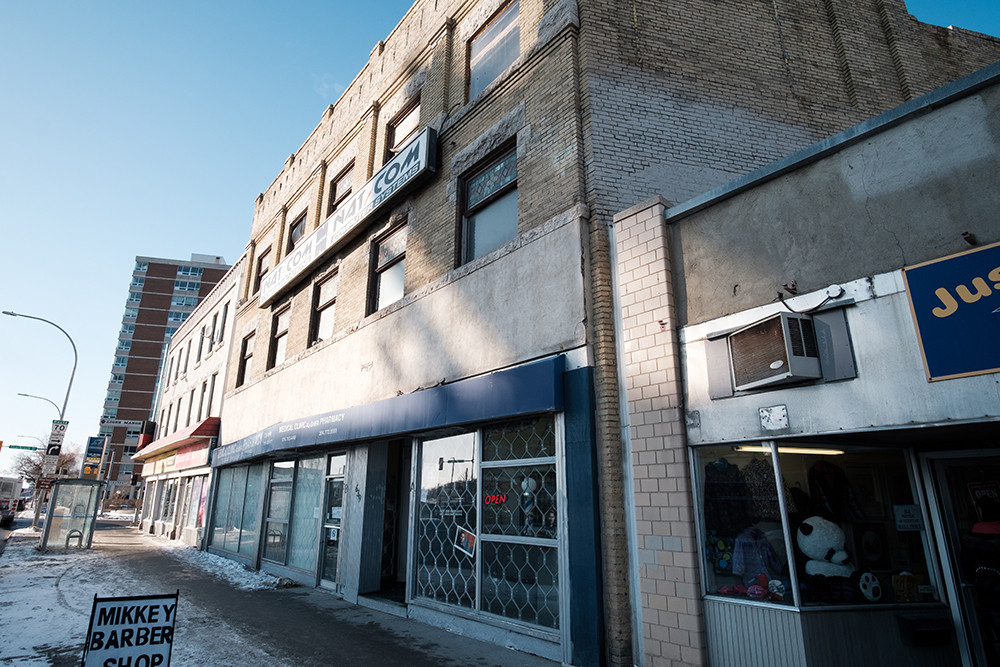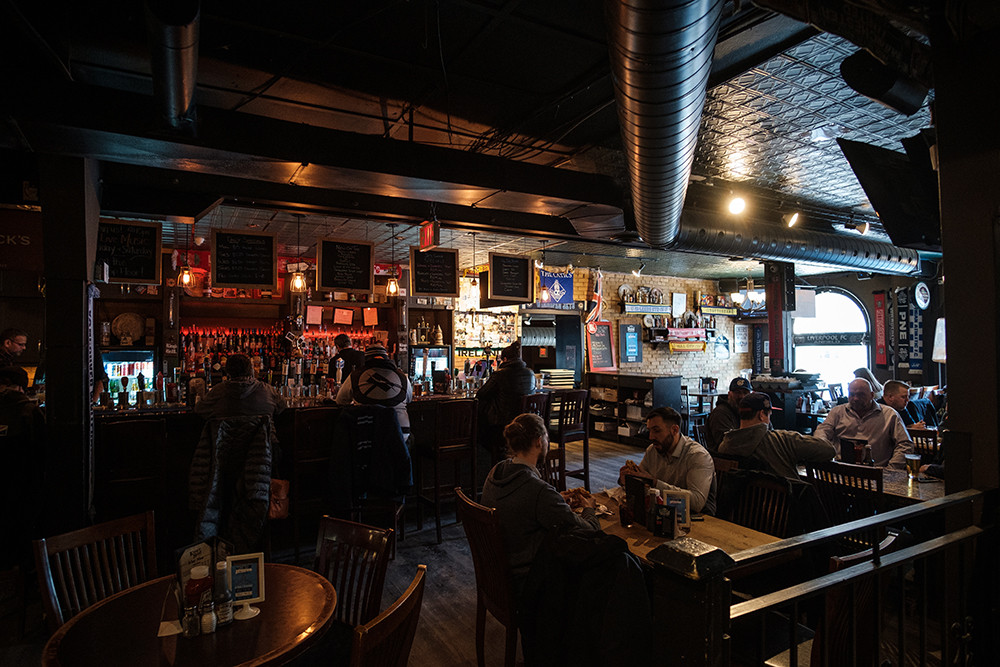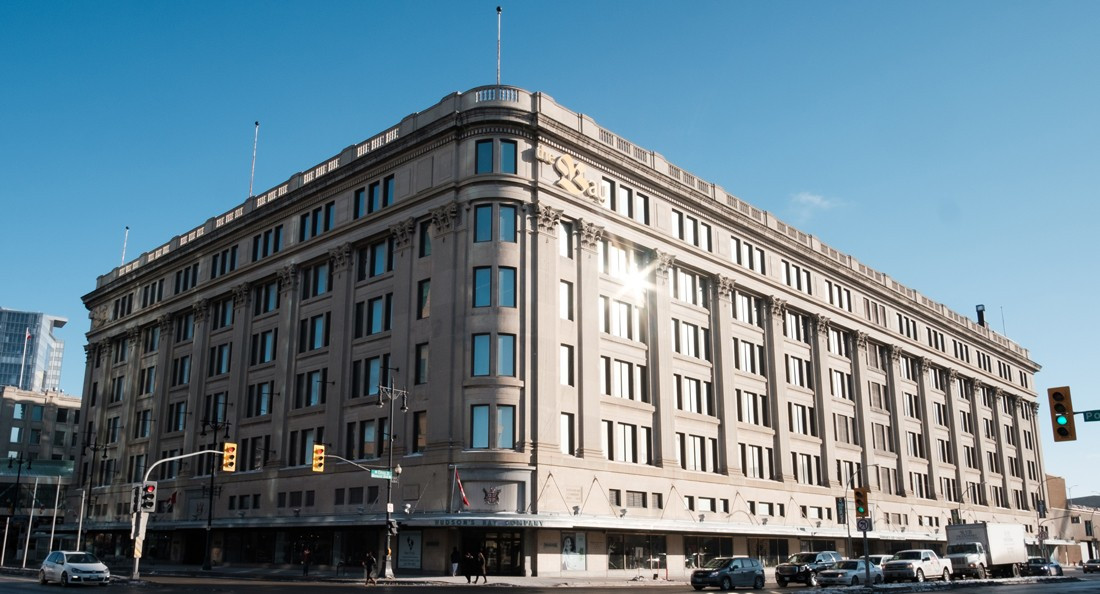The bones we’ve saved, and still live in
A critical look at Winnipeg’s historical building policies
The Historical Building and Resources Committee (HBRC) met for the first time on July 19, 2014, providing municipal support for heritage sites in the city that had previously been given status and support through the provincial government, or through groups like the Manitoba Historical Society and Heritage Winnipeg.
Ever since the HBRC was established, it nominated buildings for or removed them from the List of Historical Buildings and Resources. If a building is on the list, it may not be demolished, and the owner becomes responsible for running any proposed alterations by the HBRC and its experts.
But how well has it done this job so far?
Serena Keshavjee, an art history professor at the University of Winnipeg who specializes in architectural history, says the abundance of historical architecture in Winnipeg is not “due to any fantastic conservation policies, (but) a kind of slow economic growth or even a sort of status quo. Winnipeg has had a few of these (major) building periods, but in between, things have been relatively steady.”
She says that lots of Winnipeg’s architecture was built around the turn of the century, particularly in the Exchange and downtown, and then “nothing happened for a long time. I think between 1916 and 1948, the only building built in Winnipeg was The Bay.”
Keshavjee says Winnipeg’s later major building booms came right after the Second World War, during a period when modernism was the dominant architecture style, and in the last decade after the Canadian Museum for Human Rights was built, “but in between, it’s been relatively quiet, and that doesn’t happen in every city.”
“In Winnipeg, the only time we really have to worry about a building is when it’s empty,” Keshavjee says. “If it’s not empty, and it’s being used, people just kind of move along.” But Keshavjee says this in particular reference to modernist buildings. Other styles of architecture sometimes receive different treatment by the HBRC, leading to a wide variety in relationships between the committee and building owners.
Monte Cassino Court
The Monte Cassino Court building at 639 Portage Ave. is getting run down internally due to renovation restrictions, the owner says.
“I don’t know what’s in their mind actually, (the HBRC), sitting there. They have to do something at least to keep on having the building,” Mohammed Tariq, co-owner of Monte Cassino Court says. “Practically, City-wise, they don’t take care of anything, they only want to put the name tag up with ‘Heritage Status,’ and that puts us (as owners of Monte Cassino Court) in a very bad position. We don’t have resources like the City.”
Tariq bought Monte Cassino Court in 2013, when the building had some restrictions on renovations, but since the purchase, the taxes on the property have increased significantly, and the interior has continued to decay, while Tariq cannot intervene.
“This building is in very poor condition. Almost no work has been done, especially on the second and third floor,” he says. A cursory glance through Tariq’s submission to the HBRC reveals that the building is not in an optimal state of preservation.
The building has significant fire and water damage from the basement through to the upper floors, which also have broken windows, gaps in the wall and ceiling, and doors to the outside that cannot be locked, meaning that animals still regularly get trapped inside, and people have broken in and squatted upstairs in the past.
While Tariq and Dr. Ejaz Ahmed, the co-owner, have tried to keep the place sealed and safe, it is in dire need of serious repair. With the brick in the basement crumbling and the upstairs exposed to the elements, the limitations imposed on making changes to this building are not preserving it, but exacerbating its decay.
“We just wanted to renovate it because of the student housing. We’re very close to the University of Winnipeg. We were planning to put in something residential or student housing. But that’s only possible if it’s free from any heritage value, otherwise we won’t be able to do anything with this,” Tariq says. “It will be just another dead place in the city.”
Preservation preferences
“Modernism is a hard sell in Winnipeg,” Keshavjee says.
“You know, the Winnipeg airport was torn down, which was widely considered one of the best modernist buildings in Canada,” she says. “Architectural historians around Canada loved that building, but there was just no interest in saving it.” She says the Eaton’s building also carried great significance as an example of early modernism in Canada, and was also demolished. While these demolitions predate the HBRC, Keshavjee says the Public Safety Building is “maybe one of the best examples of brutalism in North America and is actually a structurally sound building, (but) is on the chopping block.”
“We know that every period has great examples of its style,” she says. “We see the obvious skill and talent in some of those buildings in the Exchange, some of the banks on banker’s row with their beautiful columns and the expensive granite that’s used. It’s very obvious that those are skillful, grand buildings, although there were fights to save those buildings, too.”
But obvious beauty goes a long way to garner public support for preservation.
“Modernism is very minimal. It’s not decorated, it’s not pretty by any standards – that’s not the aesthetic they were going for. Brutalism is the same thing. Brutalist buildings are not pretty. They’re made of concrete. But they have a really interesting kind of set of ideas and ethics that go with them, and they’re often super culturally significant.”
To a municipal committee, it may be easier to justify preserving that which follows a different set of ideas and ethics, where the case for conservation may be more clear to the public.
St. James Anglican
“It’s a church, and it’s in the middle of a cemetery. You can’t really sell that,” Elizabeth Bonnett says.
Bonnett, the People’s Warden, at St. James Anglican, has a better relationship with the HBRC than some. As People’s Warden she supports the churchgoers and parish leadership and operates the heritage church – a log building that predates the Confederation of Canada and which the St. James area was built around prior to being taken in by Winnipeg.
Unlike some owners of heritage buildings, St. James Anglican has welcomed the heritage building designation for their original church, because Bonnet says “it won’t hinder (the parish) in our future going forward.”
“All this does is make it even more of a place that we can protect,” she says.
The heritage church and surrounding cemetery were already a provincial heritage site, so Bonnett says she and her colleagues had some experience working with the bureaucratic steps of preservation when going through the process with the City of Winnipeg this fall.
Bonnett is sympathetic to owners who resist the designation for their buildings. She has been working on heating the log church so that it can be open to the public earlier in spring and later in the fall, and as heritage buildings are only allowed to have temporary or superficial renovations, she is working on getting temporary heaters.
Other heritage building owners often “don’t want that status, because they want to make alterations, or they want to sell that property,” she says. “But for us, we don’t want to change anything in that church. It’s a place of worship, and we cherish the look of it and the logs and everything, because that’s our history.”
“I can understand them not wanting (heritage designation), but we want to keep our history alive, and we’re a parish,” she says. “If the parish ever failed, the church and buildings would all go back to the diocese, so it’s not like you can tear it down to build a condo. There’s 5,000 people in the cemetery who might not like a condo on top of them.”
The imagined glorious past
While Keshavjee says the HBRC is getting better about preserving modernist buildings, she says “the public isn’t always interested.”
“Making a case to the wider public is something we (as advocates for modernist architecture conservation) could do better to make them understand that every period has good design, and the best of that design should probably be saved,” she says.
Serena Keshavjee is an art history professor at the University of Winnipeg, and she specializes in architectural history. // Supplied Photo
“I’ve noticed that sometimes Winnipeg imagines itself a little bit in the past and in its glorious past,” she says, “and what I mean by that is around 1900 or a little bit before 1900 until about World War One, Winnipeg was understood to be one of the really important cities in Canada.”
Because of its centrality and access to trade routes, there was an expectation that Winnipeg would become a major urban centre, she says. “And then that changed for a whole bunch of different reasons, like the Panama Canal, the 1919 general strike.”
“We never really reached that level again, and we never got to the place that we thought we should get,” she says. Upon coming here from Toronto, Keshavjee says she felt that “there were all these expectations for the city, and we didn’t fulfill our promise.”
While she says that has lightened a bit recently, as Winnipeg gets back on tourist destination lists, “part of the reason that maybe we prefer those older buildings is that nostalgia for our glorious past, but on top of that, those buildings are more obviously beautiful.”
But staying preserved in the past, no matter how “glorious,” does not necessarily help the present attain glory.
King’s Head Pub The bar and main floor of the King's Head Pub

Christopher Graves, owner of the King’s Head Pub, says his “experience with (the HBRC) hasn’t been all terrible,” but “it can be extremely tedious.”
Graves says the original King’s Head was at 120 King St., and a few years ago moved into 124. “We tried to fight the historical designation for 124 King St., and that was basically impossible. As soon as (the HBRC members) look at the date of the building, they don’t take into consideration what your business is, and it can be very arbitrary.”
He says the biggest challenge in trying to run a pub out of the building “is that the (HBRC doesn’t) really understand the hospitality business. So when we need to upgrade our HVAC system or we need to do something to a stairwell or open things up or (have) a little more egress in something, it can be very, very difficult, and because in our industry things are always changing, it can be very, very difficult and extremely expensive.”
Christopher Graves is the owner of the King's Head Pub in Winnipeg's historic Exchange District.
He says even relatively minor renovations can take up to 18 months.
“The Kings Head is the oldest pub in Winnipeg, so we kind of have no choice but to operate out of these buildings,” Graves says. “But if you went and looked downtown, there’s more vacancy downtown than any other area in the city, and I strongly believe that the restrictive covenants when it comes to historical buildings is why vacancy is so high down here.”
“I think the most important thing is it needs to be collaborative more than it is right now,” he says. “Owners have the most skin in the game, and are given very little voice at committee meetings.”
Rooting (for) architecture
Keshavjee says there is potential for Winnipeg’s architecture scene to grow in exciting directions, though, and become more representative of its population and climate.
“It’s wonderful that (architects are) embracing the idea of being a winter city,” she says, mentioning that there are lots of good currently practicing architects.
She says the most obvious future direction will be to have “more Indigenous architects using Indigenous practices and knowledge and principles to build, and that would be architecture very rooted in this place.”
Modernism, she says, was “the International Style,” and while Winnipeg does have a lot of wonderful examples of the style, it isn’t rooted here, and “we need architecture rooted in the land, place and environment.”
Published in Volume 73, Number 15 of The Uniter (January 24, 2019)







